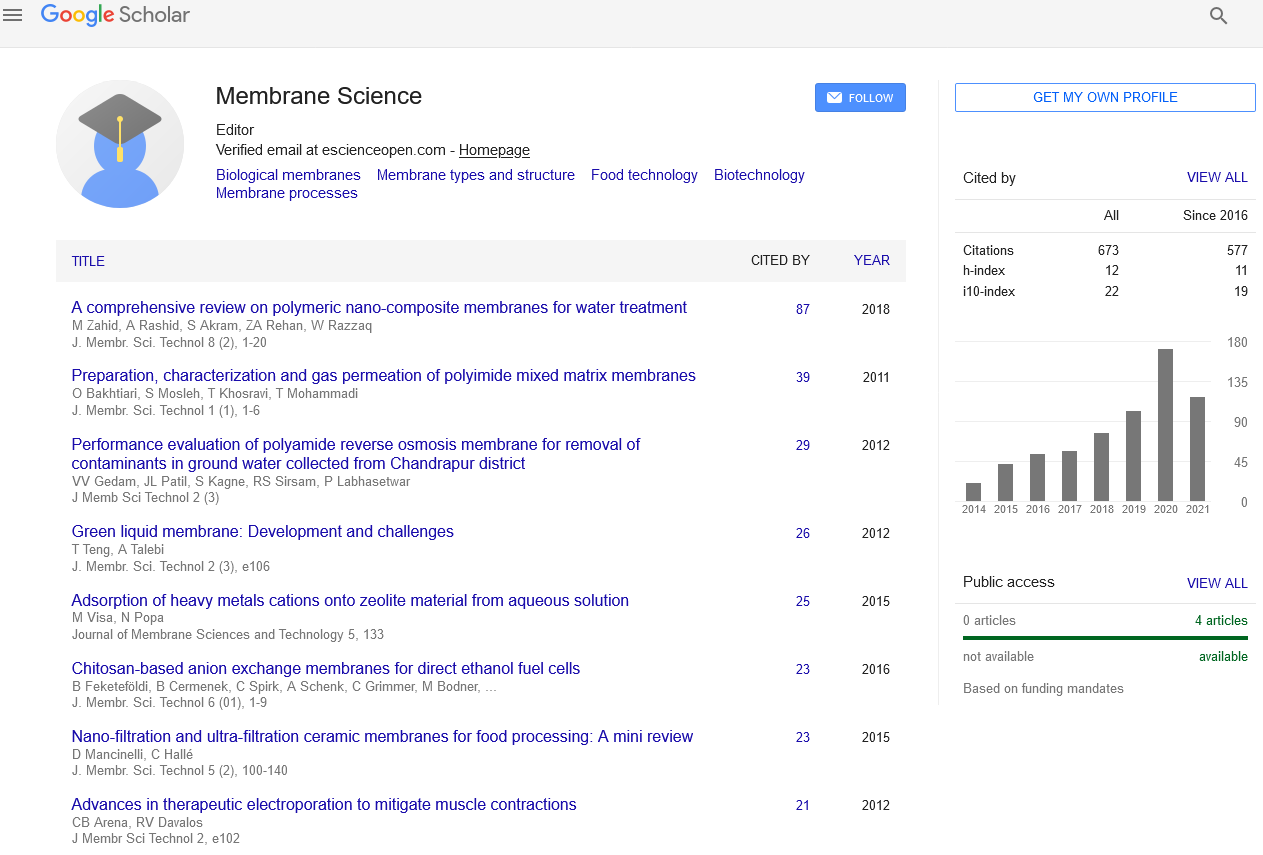Indexed In
- Open J Gate
- Genamics JournalSeek
- Ulrich's Periodicals Directory
- RefSeek
- Directory of Research Journal Indexing (DRJI)
- Hamdard University
- EBSCO A-Z
- OCLC- WorldCat
- Proquest Summons
- Scholarsteer
- Publons
- Geneva Foundation for Medical Education and Research
- Euro Pub
- Google Scholar
Useful Links
Share This Page
Journal Flyer

Open Access Journals
- Agri and Aquaculture
- Biochemistry
- Bioinformatics & Systems Biology
- Business & Management
- Chemistry
- Clinical Sciences
- Engineering
- Food & Nutrition
- General Science
- Genetics & Molecular Biology
- Immunology & Microbiology
- Medical Sciences
- Neuroscience & Psychology
- Nursing & Health Care
- Pharmaceutical Sciences
Development of reverse osmosis membrane based on UiO-66 nanoparticles deposited on polymeric support
International Conference on Membrane Science and Technology
September 11-12, 2017 | Paris, France
Dai Xuan Trinh and Toshiaki Taniike
Japan Advanced Institute of Science and Technology, Japan
Scientific Tracks Abstracts: J Membra Sci Technol
Abstract:
Recently, materials with oriented nano-channels/pores have been widely applied for filtration membranes. Nanochannel-based materials such as stacked graphene oxide, carbon and metal hydroxide nanotubes endow membranes with the permeation flux of water from one to three orders of magnitudes higher than those of commercial membrane. Because of their exceptional water transport, these classes of materials are considered as next-generation materials for filtration membranes. Owning to their advantages such as nanochannels, highly porous structure and easily tunable pore size, metalorganic frameworks (MOFs) sound a promising class of materials. In our recent publication, a novel composite membrane was fabricated by depositing nanoparticles of UiO-66, one of the most stable MOFs, on a microfiltration membrane of regenerated cellulose. The results proved that nanochannels of UiO-66 were the main pathway for water transport, resulting in a perfect rejection of methylene blue from aqueous solution while keeping an excellent permeability. However, the inter-particle voids among nanoparticles eventually cause the leakage of small solutes. In order to address this drawback, the filling of the voids for improving the performance of UiO-66 composite membranes is necessary. In this research, we utilized interfacial polymerization to fill the inter-particle voids of the UiO-66 composite membrane by cross-linked polyamide, forming a UiO-66-based thin film nanocomposite (TFN) membrane. Fig. 1 indicates the performance of the TFN membrane in comparison to a thin film composite (TFC) membrane, which was produced by a similar interfacial polymerization but in the absence of UiO-66 nanoparticles. The TFN membrane showed the permeability two times higher than that of the TFC membrane while retaining the salt rejection of 93.4%. This increment of the permeability was most plausibly because of the contribution of UiO- 66 nanochannels (6 �?), suggesting that the UiO-66 was a very promising candidate for development of reverse osmosis membranes.
Biography :
Dai Xuan Trinh received his BSc (2007) and MSc (2009) at Hanoi University of Science, Vietnam National University. He is pursuing PhD degree under the supervision of Professor Taniike at School of Materials Science, Japan Advanced Institute of Science and Technology. His research focuses on developing new MOF-based composite membranes having high selectivity, permeability and durability in water filtration. His research interest is in material design applied for environmental issues.


